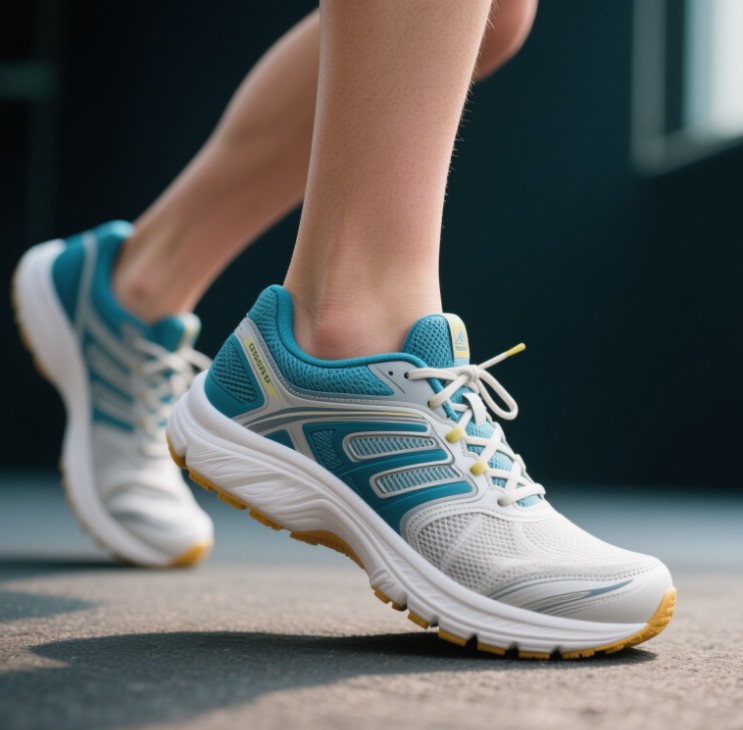When Alex stepped into the sports store that day, she wasn’t just looking for a new pair of sneakers—she was searching for a solution. Her feet had always made shoe shopping a frustrating experience. Some pairs felt great in the store but turned painful during workouts. Others looked perfect on the shelf but never truly supported her once she hit the track. She’d tried on more shoes than she could count, yet none ever seemed to feel just right.

She’d finally had enough. Today, she wanted answers.
“I think there’s something wrong with my feet,” she half-joked to the store’s fit specialist, Maya, as she slipped off her shoes.
Maya knelt down and gave her a warm smile. “There’s nothing wrong with your feet,” she said. “They’re just uniquely yours. Most people don’t realize how much foot shape affects comfort and performance. Let’s take a look.”
As Maya examined Alex’s feet, she nodded knowingly. “You have pretty high arches. That means your feet don’t absorb shock as well as someone with flatter feet. That could explain the discomfort when you run.”
Alex raised an eyebrow. “So I’ve been wearing the wrong shoes all along?”
“Possibly,” Maya said. “The good news is, you’re not alone. People generally fall into a few common foot types—high arches, flat feet, or wide feet—and each of them needs different support.”
She led Alex over to a display wall filled with running shoes, walking shoes, and cross-trainers. “Let me tell you a story,” Maya said, pulling down three different pairs. “I once helped three runners prepare for their first marathon. Each had a different foot type. Each needed a completely different shoe.”
Alex leaned in, intrigued.
“The first was Jacob,” Maya began. “He had high arches, like you. His problem was impact. Every time his foot hit the ground, there was barely any cushioning from his arches. He was always sore after running. For people like Jacob, we look for shoes with extra cushioning—especially in the midsole. The idea is to help absorb the shock that the arch isn’t naturally handling. Some shoes even have curved or rockered soles that encourage a smoother stride.”
She held up a lightweight, plush-cushioned running shoe. “This would be perfect for someone with your foot shape. See how the arch area is reinforced, and the sole feels a bit springy? That bounce reduces the pressure on your heels and toes.”
Alex tried the shoe on and immediately noticed how the midsole seemed to “hug” the curve of her arch in a way her old shoes never had.
“What about the others?” she asked, curious now.
“Then there was Lily,” Maya continued, reaching for another shoe. “She had flat feet. Her arch collapsed inward when she walked, and it caused pain in her knees after long runs. She needed stability. For flat feet, motion control shoes or those with a medial post can help. They stop the arch from over-collapsing and align the whole leg during motion.”
She handed Alex the shoe. “Feel how firm this part is?” Maya said, pressing her thumb into the arch side. “That’s the support keeping Lily’s foot in check. It looks a little bulkier than other shoes, but that structure is key to preventing injury.”
Alex slipped her foot in and could immediately feel the difference—a sort of “anchor” under the middle of her foot.
“And the third runner?” she asked, now completely hooked on the story.
“Ah, that was Sam,” Maya said, smiling. “He had wide feet. Poor guy was always getting blisters on the sides of his toes. Most standard shoes just squeezed him too tight. The solution was simple: wider shoes. But not just wider in size—some brands design shoes with a roomier toe box and flexible upper materials that expand naturally with foot movement.”
She handed Alex a pair with a mesh upper and a visibly broader silhouette. “This one is great for wide feet. It lets the foot spread out during motion, which is especially helpful during longer runs or workouts.”
Alex tried them on, and although they weren’t her size, she could immediately feel how the shoe didn’t press on the sides of her feet like many others had.
Maya stood back and looked at her. “The bottom line is, your feet have a story to tell. When you listen—when you choose shoes based on shape and function, not just looks—you run more comfortably, perform better, and avoid injuries.”
Alex felt a strange sense of relief wash over her. It wasn’t about her feet being “wrong”—it was about matching them with the right kind of support. And now, armed with new knowledge and a few perfect pairs to try, she felt ready to move.
She left the store with a bounce in her step, feeling like this was the first day of a new running chapter—one shaped, quite literally, around her.
Foot shape matters more than we think. Whether you have high arches that need cushion, flat feet that crave stability, or wide feet that deserve breathing room, there’s a shoe designed just for you. Listen to your body, match the shoe to your stride, and you’ll go farther than ever—pain-free and confident, one step at a time.